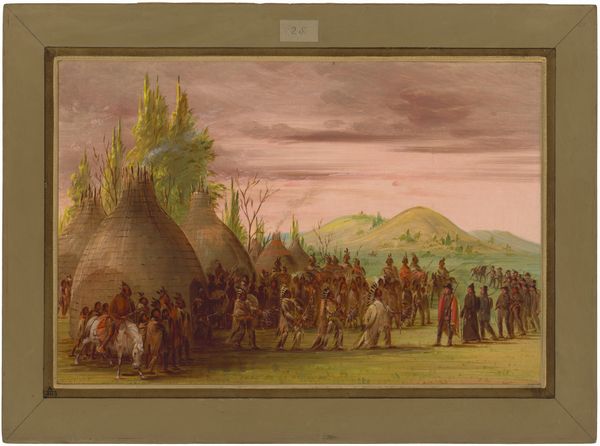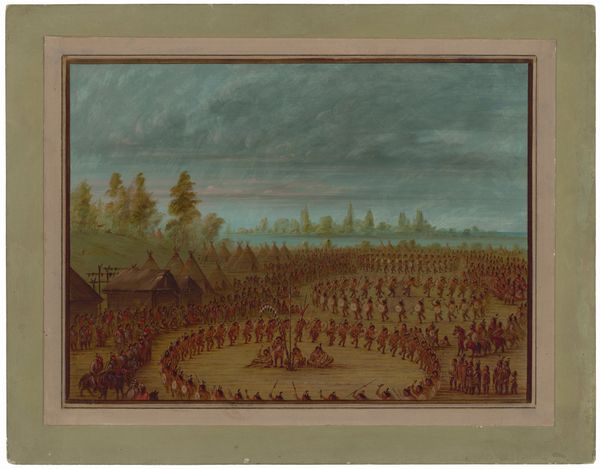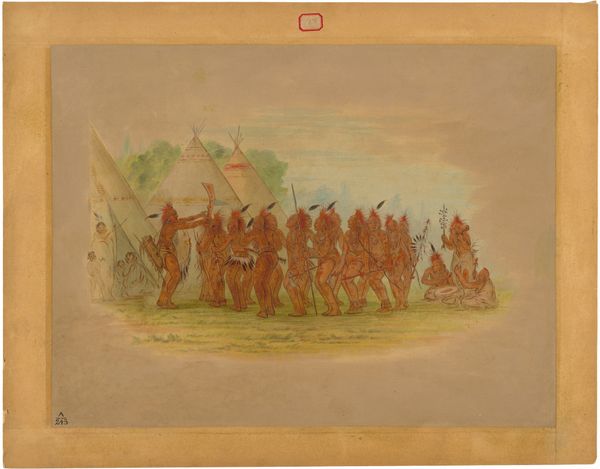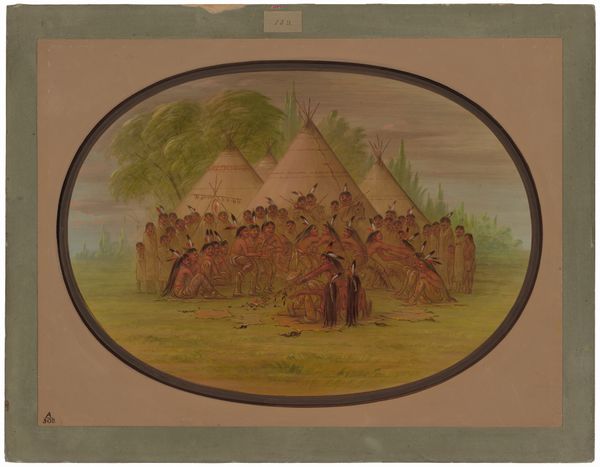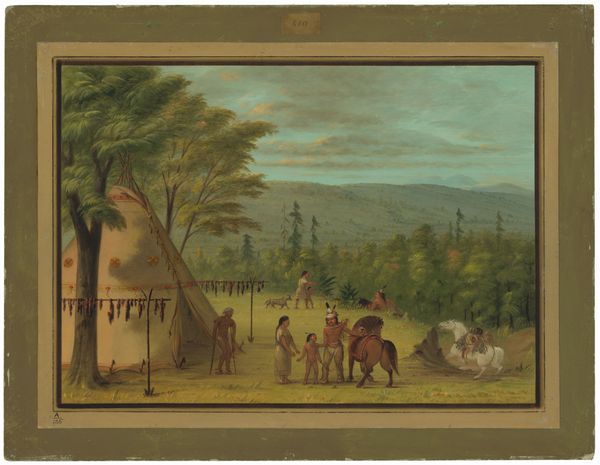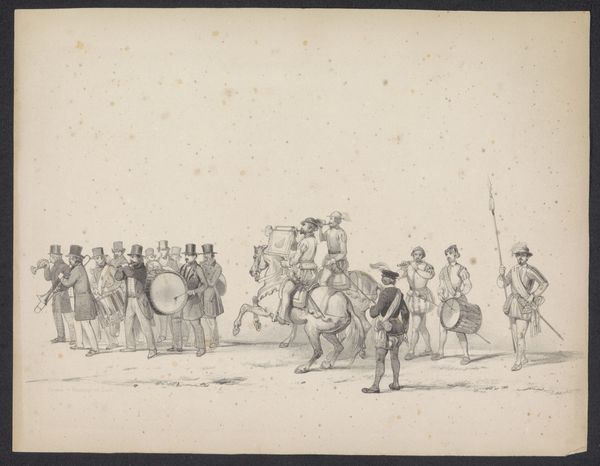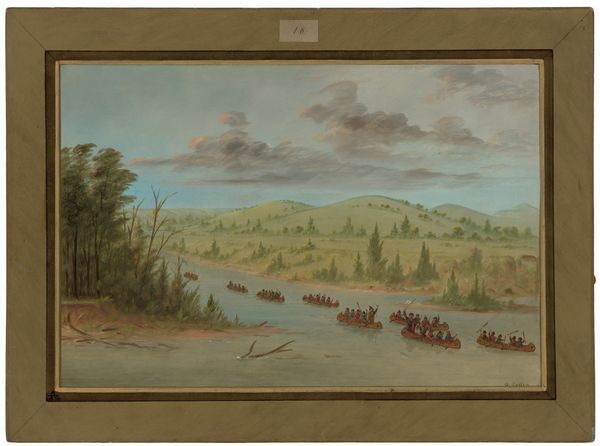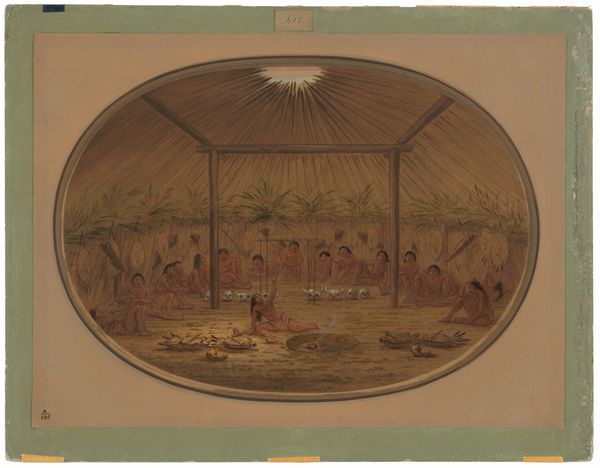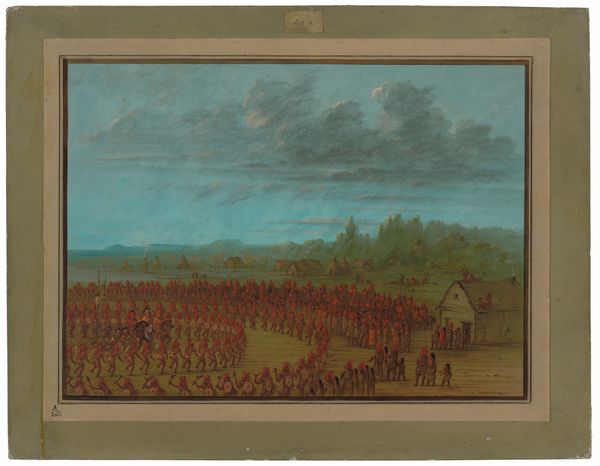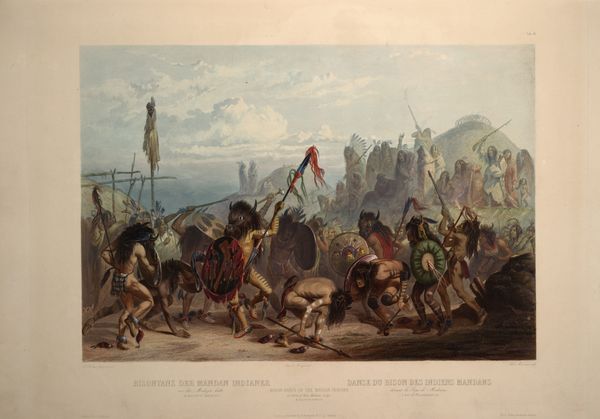
La Salle's Party Feasted in the Illinois Village. January 2, 1680 1847 - 1848
0:00
0:00
painting, gouache
#
water colours
#
narrative-art
#
painting
#
gouache
#
landscape
#
oil painting
#
genre-painting
#
watercolor
Dimensions: overall: 42 x 60.5 cm (16 9/16 x 23 13/16 in.)
Copyright: National Gallery of Art: CC0 1.0
Curator: George Catlin, painted around 1847-48, captured "La Salle's Party Feasted in the Illinois Village, January 2, 1680." A watercolor piece. What strikes you about it initially? Editor: The overwhelming feeling is a certain stillness. It’s like the moment right before something significant happens, all eyes focused on that central fire. And look at the huts, they appear more fragile than functional for the harshness of the climate. Curator: Yes, that stillness. There's an almost dreamlike quality to the pale sky and the snowy ground, lending it an air of solemnity. This work almost acts as a time capsule, attempting to freeze a moment of intercultural contact, rife with complexities we can only begin to imagine. Editor: I’m drawn to those tent-like structures, which resemble domed shelters covered in hides. Notice how the artist delineates a space, emphasizing this location for communal meals, rest, and storytelling. What hides do you think they are made from? Considering the weather, I'd venture the party were consuming lots of food to stay warm. The amount of labor it takes to make such hide, I find amazing. Curator: Absolutely. And it makes you ponder about Catlin himself, doesn't it? A white man painting this scene, undoubtedly from a position of power and observation. There's a responsibility in representation that cannot be ignored, what stories do you think Catlin attempts to create here? Are they true to reality? Can they ever be? Editor: A crucial point. These paintings can serve as invaluable documents, offering visual narratives of practices and relationships long altered by colonialism. This highlights both the opportunity and obligation of representation. I imagine those tents held so much information and resources from that local economy. What kinds of foods did the land yield? How did their lives contrast with those of the visiting party? Curator: It’s a potent reminder that history painting is never neutral, and even with good intentions, our perspective inevitably colors the narrative. How the simple campfire turns into a meeting of worlds. Editor: It forces a closer inspection of the details, revealing deeper implications about labor, resources, and representation in historical documentation. The party and tribe probably took materials and technologies home from that meeting also! Thanks for painting that larger story.
Comments
No comments
Be the first to comment and join the conversation on the ultimate creative platform.

